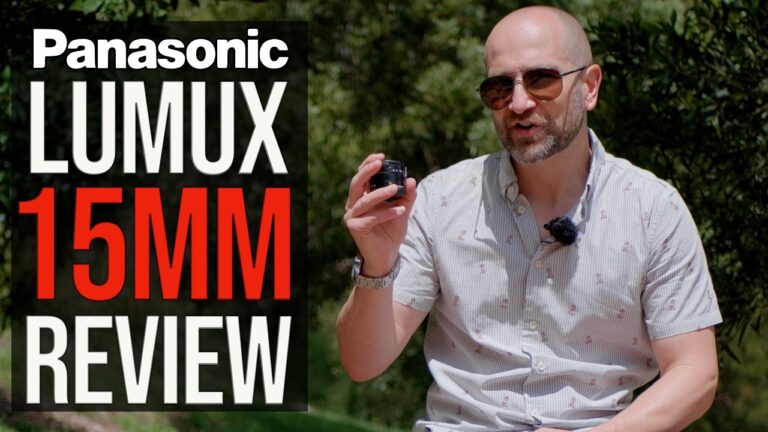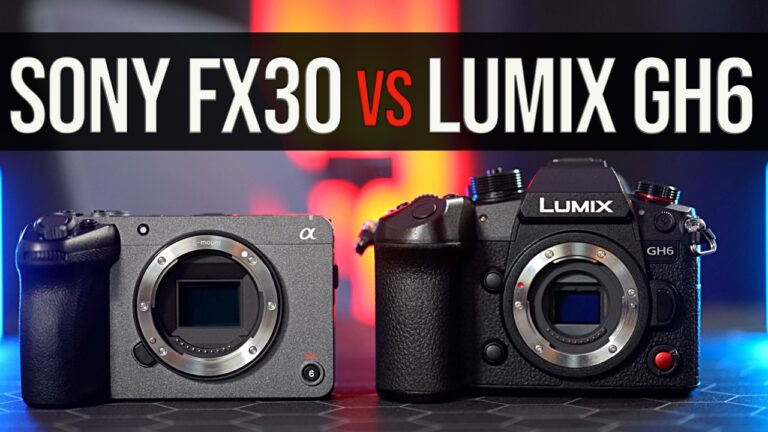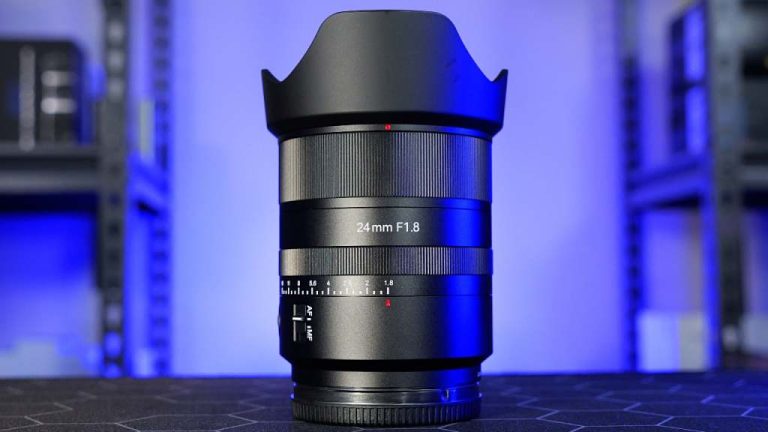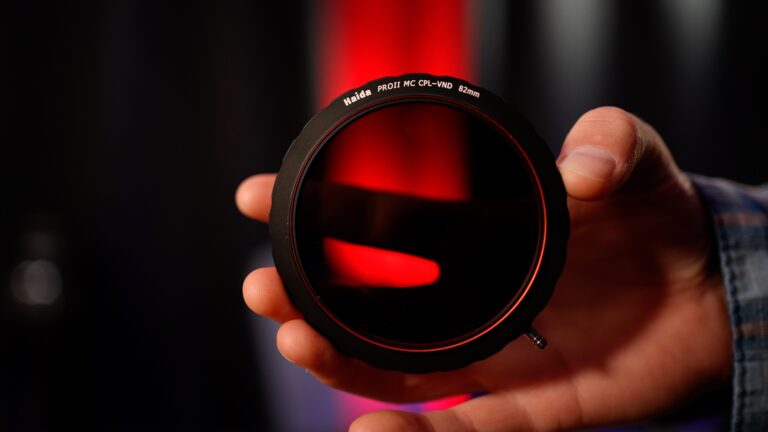Panasonic Leica 12-35mm f2.8 Review | Leica Glory!
Panasonic Leica 12-35mm f2.8 Review
The Panasonic Leica 12-35mm f2.8 zoom lens has arrived. How good is this new lens for video and photography? I’ll cover what you need to know!
This new lens has some welcomed updates and improvements over the first two editions. I own version 2, so I’ll be comparing it against that in this review.
I’ve been using this lens over the last two weeks, and it’s been a great addition to the Micro Four Thirds lineup. It’s great to see Lumix releasing new lenses in 2023, keeping the format alive and well.

Ethics Disclaimer:
Panasonic lent me this lens for the review. Furthermore, I don’t get to keep it, and no money changed hands. I had it for two weeks and returned it at my own expense.
Aperture
The Panasonic Leica 12-35mm has an aperture range of f2.8-f22. This is a very versatile lens for video thanks to its constant 2.8 aperture. There’s no aperture ring, but it can be easily controlled using the camera wheels and dials.

Field of View
The Panasonic Leica 12-35mm f2.8 zoom has the same field of view as the classic 24-70mm on a full-frame camera. This focal range is functional for a one-and-done lens for travel photos or videography. I’ve been using version 2 of the 12-35mm, and it’s been my go-to lens when I don’t want a bag of primes.
12mm on the wide angle is great for vlogging, landscapes, and wide-angle photography. Punching into 50mm will be great for getting some subject separation, and 35mm (70mm equivalent) is great for portraits and when you need to punch in without losing light.
70mm isn’t a typical portrait lens focal length, but it’s tight enough to capture great detail and subject separation when paired with a GH6, GH5II, G9, and any other Micro Four Thirds camera.

Gimbal operators will love the versatility of this lens. It will give you a perfect wide-angle shot to a tighter field of view. While the lens extends while filming, if you’re using a DJI Gimbal, you most likely won’t need to rebalance if you change focal lengths. I tested this on my DJI Ronin S, and it worked great.
Upgrades
Minimum Focusing Distance
There have been three main upgrades over the prior two Lumix G 12-35mm editions. The first upgrade is the shorter minimum focusing distance. This new lens gives us a 15cm minimum focus compared with the 25cm of the previous version. Below is a comparison of the minimum focusing distance of the Leica versus version 2.

Improved Lens Flaring Resistance
Secondly, the lens flaring has finally been addressed. Thanks to the collaboration with Leica, the new 12-35mm handles lens flaring much better. Shooting in the same backlit scenario, there was a massive difference in contrast and colors.
The new Panasonic Leica 12-35mm performed better overall, and it’s great to see these flaring issues addressed. The focus ring, zoom ring, and weight are identical. Everything feels the same in my hand as in the previous version, which you’ll either like, or won’t. For me, it’s decent.

Optical Image Stabilization
The Panasonic Leica 12-35mm f2.8 zoom is a great addition to any Lumix camera with or without an IBIS system. Paired with a GH6 or GH5II, it will enable the Dual I.S feature. This mode has the best stabilization combination on Lumix bodies. This mode is great for follow-shots or vlogging.
While I noticed no change in the optical stabilization with my version 2, the lens performed excellently. All my sample clips and photos in the video review (below) were shot using the Panasonic Lumix GH6.
How to Turn Power O.I.S. On
To enable Dual IS click the Power O.I.S. switch on the left side of the lens.
Boost I.S. mode is extremely sticky. If you plan on shooting video handheld and need a tripod-like shot, turn on boost I.S. mode. I usually map Boost I.S. to a custom key on my GH6. If you’re unsure how to do this, check out my Lumix GH6 tutorial. It will cover everything you need to know about this IBIS technology.
Panasonic Leica 12-35mm f2.8 Video Review
Check out my full review of the Panasonic Leica 12-35mm f2.8 with samples shot using my Lumix GH6.
Find the best deals on the Panasonic Leica 12-35mm lens Here
B&H USA | Walmart USA | Australia | Germany | UK | Canada
Video Autofocus
Let’s talk about video autofocus. The new Leica 12-35mm lens paired with the GH6 gave me slightly more reliable results than my version 2 when shooting video. I checked with Panasonic regarding their autofocus motors, which are supposed to be the same. This improvement might be newer lens firmware or just dumb luck.
The hard with Panasonic’s Depth from Defocus contrast detection Autofocus is that it’s unpredictable. However, after testing it side by side, the new lens did perform better in all video-centric scenarios. In addition, I noticed less DFD pulsing and second-guessing with the new lens.
While the focus motors are confirmed identical to version 2, the results say otherwise. I found this interesting. The great news is that the autofocus is not worse than version 2, so it’s a solid pass.
Photography Autofocus
Single shot mode with the 12-35mm worked great. Burst mode did struggle in some scenarios on a moving subject. This is no fault of the lens but a problem with the DFD autofocus system. In a well-lit scenario, I could get solid results shooting photographs with and without the mechanical shutter.
AFS and AFC autofocus speeds were solid. You can zip the focus point around by half-pressing the shutter button. So you won’t have issues working between the minimum, and infinity focus with DFD for photography.
Vlogging with the Panasonic Leica 12-35mm f2.8 Lens
Vloggers will love this lens thanks to its great field of view on the wide end. 12mm is perfect for vlogging, and it ensures there’s no warping in the corners of the frame, as you’d find with the Lumix 9mm f1.7.

Thanks to the Power O.I.S. lens stabilization feature, you can get excellent and stable results for vlogging. The Panasonic Leica 12-35mm lens activates Dual IS 2 within the GH6, and it’s some of the best stabilization I have ever seen.
I didn’t find it better than the previous version 2, but it’s still amazing. I use version 2 for vlogging and travel purposes, mostly because of how stable the straight-out-of-camera results are.
Low Light
With a maximum aperture of f2.8, this lens is a solid low-light performer on the Lumix GH5S and GH6. I shot some videos and photographs in low light and was surprised by the results. Of course, if you want the best in low light, the Panasonic 10-25mm f1.7 is the obvious choice, but this did a great job.

Bokeh
While this is an f2.8 zoom lens for Micro Four Thirds, it’s still possible to get decent background blur and subject separation. The short minimum focus distance gives you a creamy background between 12-35mm if you’re up close to your subject.
Decent background blur and subject separation are also possible from 25-35mm when using the lens in a portrait fashion. I was very pleased with the results when shooting at 35mm. The background compression and look were great while being very sharp at f2.8.
Bokeh Balls are pleasing to the eye, considering this is a zoom lens. Panasonic and Leica did a great job rendering the specular highlights. There is some onion-ringing in some bokeh balls and some cat’s-eye bokeh towards the edges. Overall, I am very pleased with the results, and it will be a good upgrade over other zooms in the range.

Zoom Ring
The Zoom ring feels great and responds perfectly. I am a big fan of the Lumix G zoom lenses. I prefer the feel of them over the L-Mount Zoom lenses. They are easier to zoom in fast, and the tension is spot on. While the lens barrel does extend when pulling focus, it was a pleasure to use.

Focus Ring
The Focus ring is decent but not amazing. My biggest complaint with the focus ring is that it works fine if you have a light touch, but it’s no good if you’re used to using a focus ring with more finger and thumb pressure. I found when I pressed down a little harder than “soft,” it would feel sticky. This focus ring is best used with a light touch for pulling focus manually.
Should You Upgrade and is it Worth it?
Is the new Panasonic Leica 12-35mm f2.8 zoom lens worth it? If you don’t have a zoom lens for your Micro Four Thirds camera, it’s worth it. Version 2 owners will only see an improvement in flaring and contrast. Video performance and optical performance is essentially the same.
This will be a worthwhile upgrade if you’re coming from the original 12-35mm f2.8 lens. The optical image stabilization was improved in version 2, which continues to version 3. Version 2 and 3 are better choices for filmmakers due to the increased stabilization.
For video work, this is a great lens. It’s small, compact, and somewhat fast. Unfortunately, only a few lenses have a constant aperture in the Panasonic range; an update to this lens is always a welcome addition.

Find the best deals on the Panasonic Leica 12-35mm lens Here
B&H USA | Walmart USA | Australia | Germany | UK | Canada
Should I buy the Panasonic Leica 12-35mm f2.8 lens in a kit?
The answer is yes if you don’t already own a zoom lens! The only downside to this lens is that it’s 50% more expensive than version 2, which might be a turn-off for potential buyers.
The best way to buy this lens is new in a kit with a GH6, as you’ll generally save close to 20%, depending on the store. However, if you don’t think lens flaring will be a problem for you, then version 2 is 80% of the way there at a lot less money.
This new 12-35mm f2.8 is dust and splashproof like the previous two lenses of the same series. In addition, the operational temperature is down to -10c. This robust lens is great for travel, photography, and video.







